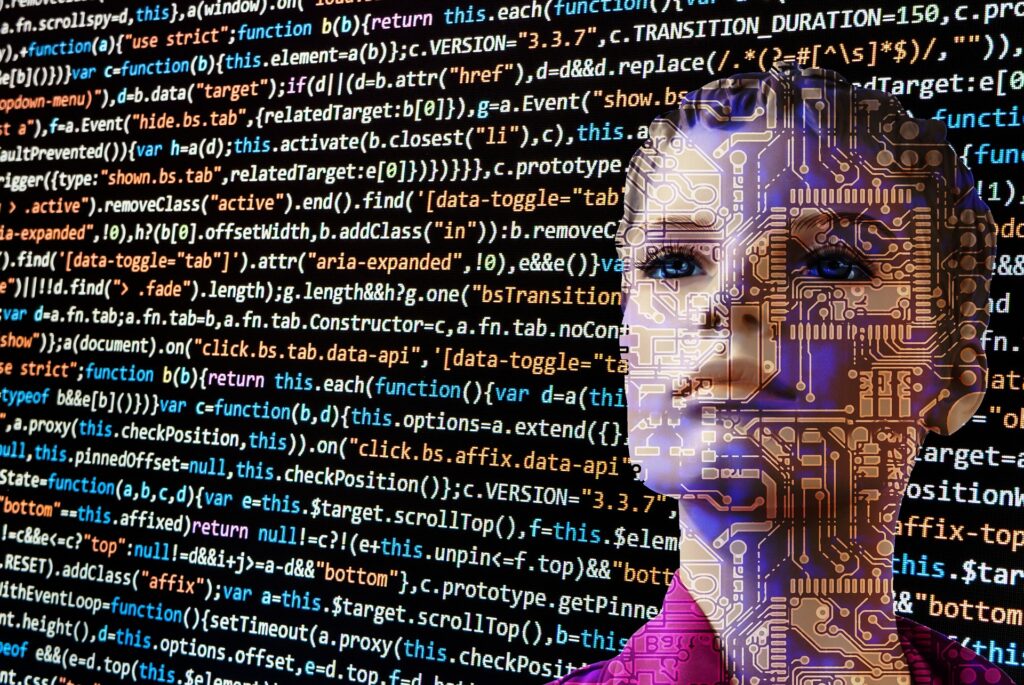Artificial Intelligence (AI) is a field of knowledge where engineers and scientists try to make computers to be able to perform human tasks that require some degree of intelligence.
AI is becoming increasingly prominent in our lives, performing many tasks we seem to take for granted. In fact, AI is already replacing some jobs, which actually causes some concern in humans. What are the things that AI can do better than humans?
In general, AI can outperform humans in tasks such as:
- Operating in an extreme, hazardous environment
- Recognizing and categorizing images and sounds
- Scaling up quickly
- Analyzing large datasets for patterns
- Processing vast amounts of data quickly
- Performing repetitive tasks without tiring
- Optimizing and speeding up processes

This article will examine how AI performs better than humans and in which areas.
What Is Artificial Intelligence?
AI is a field of knowledge within computer science and engineering. It focuses on developing intelligent computers and machines to perform tasks that require thinking. It is slowly replacing humans in certain tasks and is predicted to be able to do more in the future.
AI systems achieve this by using machine learning algorithms or statistical models to learn and improve. The common intelligent tasks that AI machines can perform include visual recognition, speech transcription, data analysis, pattern prediction, decision-making, etc.
AI is currently used in a wide range of applications. You may see AI in most places, such as transportation, finance, or healthcare.
In transportation, AI may be used to analyze and find the shortest route to help you arrive faster. It can also be used to look at a stock price’s historical movement, recognize patterns, and attempt to predict future movements.
Despite its benefits, AI has also sparked many concerns. As it is replacing humans, many are worried that they may lose their jobs and livelihoods. There are also concerns about the unethical use of AI to facilitate crimes such as identity theft. AI’s development must be managed and used responsibly and ethically.
What Areas Are AI Better Than Humans?
As AI improves, humans have learned to rely increasingly on AI to get tasks done. These tasks often require a certain degree of intelligence and may be done in a hazardous, unsafe environment.
AI could also outperform humans because it can optimize faster by recognizing patterns. AI’s biggest strength, however, is its capability to work tirelessly and, in many cases, at a higher pace than human intelligence is capable of.
Below are some of the ways AI is currently capable of outperforming humans:
Replacing Humans In Extreme Environments
In certain situations, humans may need to operate in hazardous environments. This could include disaster sides or extreme environments such as deep sea or outer space.
Previously, humans needed to put on protective suits and perform these dangerous jobs themselves. However, as robotic technology improves, humans can send robots to this space, with humans controlling at distance from earth. However, these robots are not ‘smart’ because they still require human operation instructions.
With AI technology, modern robots can operate independently and only require minimal human instructions or input. AI is programmed into probes, bots, or drones to record information and make decisions based on it.
For example, a drone was sent to fly from point A to B. Along the way, it detected a storm upfront. Without AI, the drone would fly straight unless a human controller would steer and change its course.
With AI, the drone would be able to see the storm forming. It can then perform some calculations and change its course.
Recognizing And Categorizing Images And Sounds
AI’s ability to process information starts with recognizing and categorizing it. In the case of processing images and sounds, AI is much better than humans.
In fact, AI models in the Minwa supercomputer can process a million pictures and sort them into categories with an error rate lower than humans. The AI models developed by Google and Microsoft are also better than human beings.
The typical error rate for humans is around 5%. These AI models hit 4.94% (Microsoft) and 4.8% (Google) error rates. The Minwa supercomputer from Baidu? 4.5%.
The categorization these machines perform is not the simple type where you separate between a car and a house. AI’s are now capable of separating images on finer detail, for example, telling between different breeds of dogs or types of cars.
AI typically relies on high-performance hardware to spearhead the processing work while using neural networks to learn and improve recognition skills.
Scaling Up Quickly
In pre-industrial days, if you intended to scale up any business or operation, you would need to increase the number of humans. More humans equal more hands, meaning more work gets done in a shorter time.
But humans are fluid things. They tire, they get sick, and they complain. When you put a bunch of humans and work together, politics happen. This slows down the scaling speed.
Humans later learned to replace humans with machines. Machines do not tire, and you only need a small number of humans to maintain them. However, machines are still not intelligent and perform only physical tasks.
In comes AI. Suppose you have a financial firm that analyzes the stock market. If you need to scale in the pre-AI days, you need to hire more analysts to study the market. These days, with AI, you scale up your AI analysis capability by using a more powerful computer or AI model.
Your firm can now analyze more markets and data, meaning analysis scale and capabilities have gone up more. And yes, almost no humans are involved, meaning they would not slow down your scaling-up process.
Processing A Vast Amount Of Data Quickly
AI is also much more capable of processing data compared to humans. Humans may still be better at interpreting data based on the real world, but we have lost out to AI for some time when it comes to processing.
Suppose you are given a raw data set of about three million food company customers. Your task is to build a customer profile that best represents them.
You would probably pour the data into some data organizer, maybe Microsoft Excel, and start from there. After painstakingly organizing the data, you spend countless days looking at the data from all corners to find patterns, trends, or similarities.
Then, you produce a report. Even then, you cannot be sure that you have not missed any trends or similarities, as you are doing it with your own eyes.
An AI model could probably do this much faster. Feed the data in, let it work its magic, and you get your report afterward. It may still require you to ensure the data set fed into the model is correct and to confirm that its analysis makes sense.
But the best thing about AI here is that it can comb and recognize any possible pattern or trend without missing out on any. Even you cannot be sure about that, no matter how long you analyze the data yourself.
Optimizing And Speed Up Processes
AI is also beating humans in optimizing and speeding up processes. This is commonly achieved in research, communication, and data processing.
In research, the latest breakthrough would be the ChatGPT from Open AI. Before it existed, we had to spend time performing Google searches, reading articles, and studying and learning about something.
With ChatGPT, you only need to type in your query, and it will scour the internet and find you the answer. You only need to do some confirming work after that.
In communication, humans communicate using languages that may not be efficient. There may also be things such as emotion and politics involved in human communications, slowing down work.
AI systems, however, can communicate faster by optimizing the operating language. In fact, the optimized human language is to the point that even humans no longer understand it. Meta’s AI experiment resulted in this, causing it to turn off the systems.
Analyzing Large Datasets
As humans move further and further into the information age, we have become more and more reliant on analyzing larger and larger sets of data.
Larger sets of data are believed to provide a better understanding, which helps us make better predictions of the future.
Before AI, humans learned to use computing devices to try to categorize data as a way to simplify and make it more analyzable by our brains. We started using charts, graphs, lines, and spreadsheets.
However, data sets have grown so large that they can no longer fit into an Excel file. An Excel file takes about 1 million rows and 16,000 columns of data. A dataset of, say, the citizens of a small country would not even fit here.
AI is capable of analyzing even larger sets of data than humans are capable. AI could use its ability to sort raw data into ways it could understand and then present it in ways humans understand.
It can also further identify observable trends and patterns in the data set. The AI system can then use this understanding to try to make predictions in the future.
This may explain why AI models are becoming more important in finance, where firms rely on AI to predict market movements in the future and hedge their position accordingly.
Performing Repetitive Tasks Without Tiring
This is perhaps AI’s largest advantage over humans. They never tire. AI will work hours after hours without complaint. AI does not require bathroom breaks, nor does it unionize and strike if not paid well. In fact, AI does not even need a salary.
Aside from that, even if there are humans who are willing to work tirelessly for hours and hours and not complain, they still make errors. As humans tire and lose concentration, it is common for mental mistakes to happen.
We may misread data, miscategorize information, or fail to see the findings from all angles.
AI systems, provided that they are programmed properly, do not suffer from this issue. It will continue working at its best accuracy for hours, even days, provided electricity and internet are available.
Recent Posts
You may be familiar with using Siri or Google Assistant. These are examples of AI voice assistants, where you use them to perform tasks such as searching, setting reminders, or calling...
